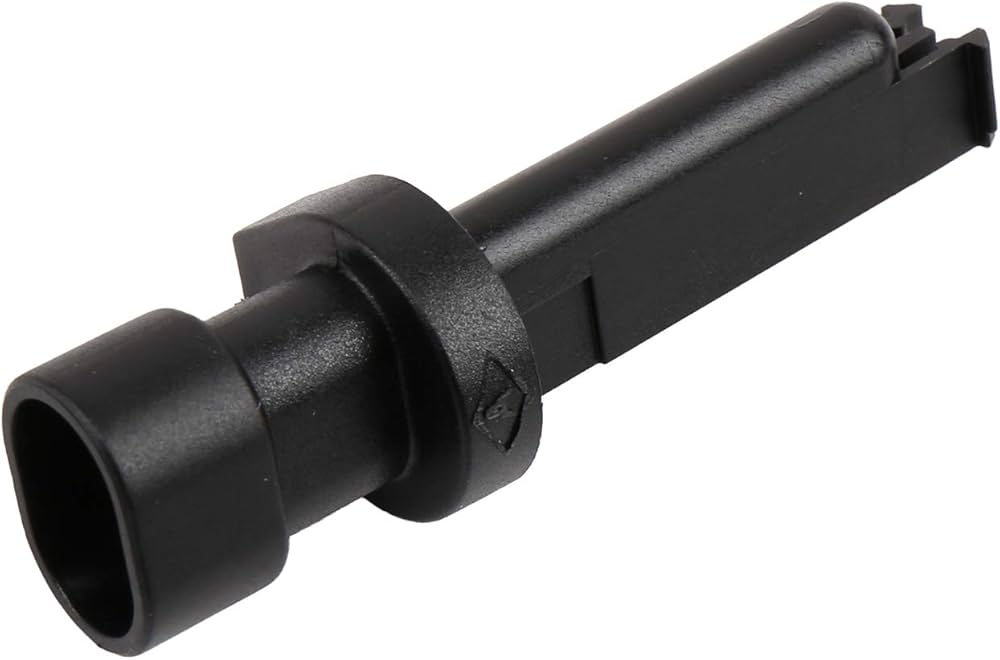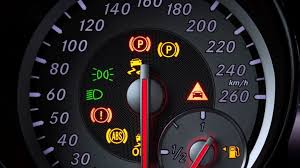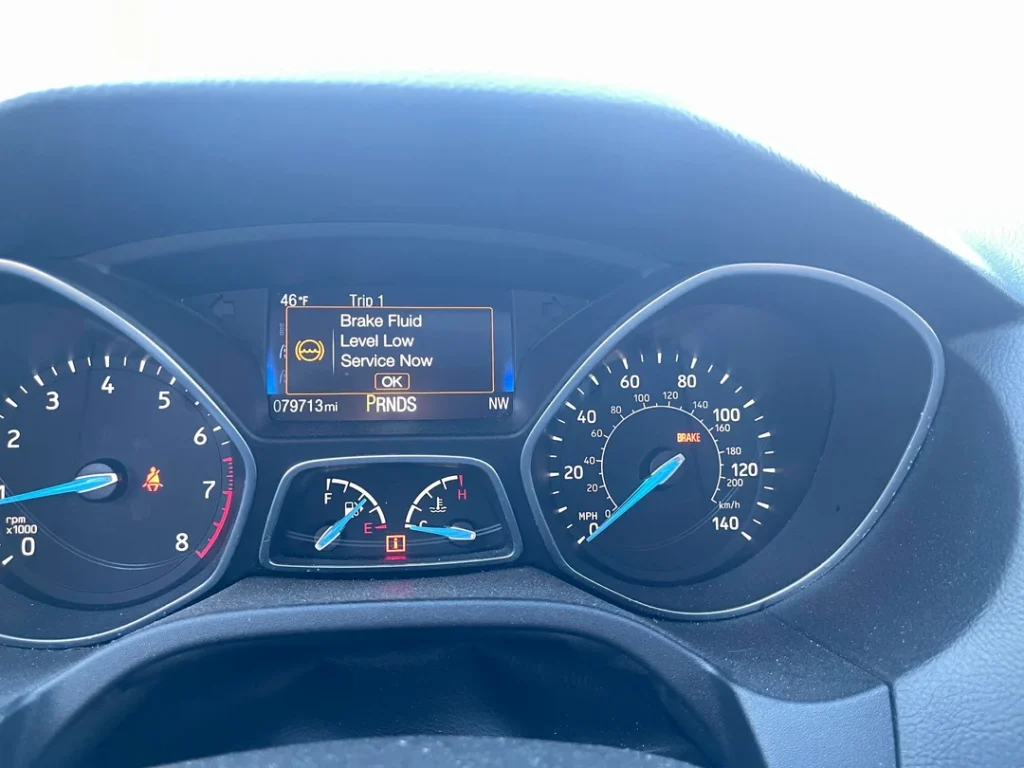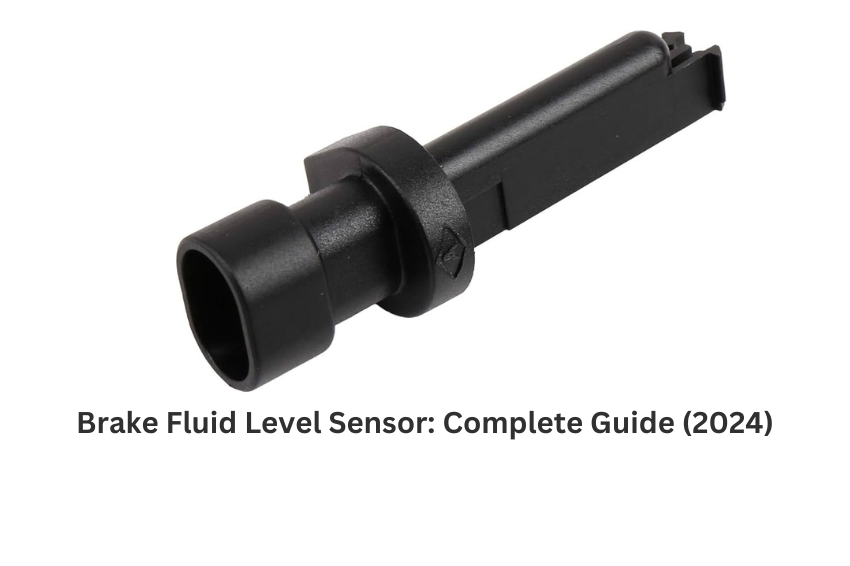What is a brake fluid level sensor and why is it important?
This comprehensive guide covers everything from sensor basics to troubleshooting and replacement tips.
What Is A Brake Fluid Level Sensor?

A brake fluid level sensor is an important component in your vehicle’s braking system that monitors the amount of brake fluid in the reservoir.
It’s essentially a safety device designed to alert you when the brake fluid level drops below a safe operating point.
But how does it work?
The brake fluid level sensor is typically a float-type device that sits inside the brake fluid reservoir.

As the brake fluid level decreases, the float lowers, sending a signal to the vehicle’s computer.
This signal then triggers a warning light on the dashboard, indicating that the brake fluid level is low and requires attention.
Brake fluid is important for the proper functioning of your vehicle’s braking system.
It transmits pressure from the brake pedal to the calipers, causing the brake pads to squeeze the rotors and slow or stop the car.
If the brake fluid level gets too low, it can compromise braking performance, leading to extended stopping distances or brake failure in extreme cases.
Therefore, the brake fluid level sensor plays an integral role in preventing potential accidents by alerting you to a critical issue that needs immediate attention.
However, the brake fluid level sensor is usually found in the brake fluid reservoir, which is typically located under the hood of your vehicle.
Its exact position may vary depending on the make and model of your car.
Signs Of A Failing Brake Fluid Level Sensor
Here are some common indicators that your brake fluid level sensor might be failing:
Dashboard Warning Lights

The most obvious sign of a brake fluid level sensor issue is a warning light on your dashboard.
This light typically resembles a circle with an exclamation point in the center.
If this light illuminates, it’s essential to check your brake fluid level immediately.
However, this light can also indicate low brake fluid levels, not just a sensor malfunction.
Changes In Braking Performance
While not always directly attributable to a faulty sensor, changes in braking performance can sometimes be linked to brake fluid level sensor problems.
If you notice that your brakes feel spongy, soft, or less responsive than usual, it could be a symptom of a larger issue, including a potential sensor malfunction.
Irregular Sensor Readings
In some cases, a brake fluid level sensor might provide inconsistent readings.
This can result in the brake warning light flickering or turning on and off intermittently.
If you experience this behavior, it’s highly likely that the sensor itself is faulty and needs replacement.
Constant Low Fluid Level Warning

If the brake fluid level sensor consistently indicates a low fluid level, even after refilling the reservoir, it’s a strong indication of a sensor problem.
It’s essential to address this issue promptly to avoid potential brake failure.
With that said, early detection and addressing any issues with your brake fluid level sensor is paramount for maintaining your vehicle’s safety.
If you suspect a problem, it’s always best to consult with a qualified mechanic for diagnosis and repair.
Checking And Replacing The Brake Fluid Level Sensor
Disclaimer: Replacing car parts can be risky. If you’re unsure about this process, it’s highly recommended to consult a professional mechanic.
Replacing a brake fluid level sensor is a task that many DIY enthusiasts can handle, but it requires care and accuracy. ‘
Before you start, ensure you have the correct replacement sensor for your vehicle.
Tools And Materials
- New brake fluid level sensor
- Socket wrench set
- Brake fluid
- Clean rags
- Gloves
Step-by-Step Replacement Guide
- Safety First: Park your car on a level surface and engage the parking brake. Wear gloves to protect your hands from brake fluid.
- Locate the Sensor: Open the hood and identify the brake fluid reservoir. The sensor is usually located at the top of the reservoir.
- Disconnect the Electrical Connector: Carefully unplug the electrical connector from the sensor.
- Remove the Old Sensor: Use a socket wrench to remove the sensor from the reservoir. Be cautious not to drop it into the reservoir.
- Clean the Area: Use clean rags to wipe the area around the sensor mounting point to remove any dirt or debris.
- Install the New Sensor: Carefully insert the new brake fluid level sensor into the reservoir and tighten it securely with the socket wrench.
- Reconnect the Electrical Connector: Plug the electrical connector back into the new sensor.
- Check Fluid Level: Add brake fluid to the reservoir if needed. Refer to your vehicle’s owner’s manual for the correct brake fluid type.
- Test the System: Start the car and check for any warning lights on the dashboard. Test the brakes to ensure proper function.
Important Safety Precautions
- Brake fluid is corrosive. Avoid getting it on your skin or clothes.
- Always refer to your vehicle’s owner’s manual for specific instructions.
- If you’re unsure about any step, consult a professional mechanic.
Note: After replacing the sensor, monitor the brake fluid level regularly. Low brake fluid levels can indicate a leak or other issues.
Brake Fluid Level Sensor Compatibility
Ensuring your brake fluid level sensor is compatible with your vehicle is required for safe and efficient braking.
Using the wrong sensor can lead to incorrect readings, potential brake failures, and other complications.
However, a brake fluid level sensor’s compatibility is determined by several factors:
- Vehicle Make and Model: Different car models have unique brake systems, and the sensor must match your specific vehicle.
- Sensor Type: There are various types of brake fluid level sensors, each designed for specific applications.
- Part Number: The part number is the most accurate way to identify the correct sensor for your vehicle.
To find the correct brake fluid level sensor for your car, follow these steps:
Identify Your Vehicle:
Determine the exact make, model, and year of your vehicle.
Locate The Old Sensor:
If you have access to the old sensor, check the part number printed on it.
Consult A Parts Store Or Dealership:
Provide your vehicle information to a reputable parts store or dealership.
They can help you find the correct sensor.
Online Resources:
Many online retailers offer vehicle-specific parts.
Use their search tools to find compatible sensors.
Check For Aftermarket Options:
While OEM (Original Equipment Manufacturer) parts are often preferred, aftermarket sensors can be a viable option.
Ensure they are from a reputable brand and compatible with your vehicle.
That said, Whenever possible, opt for OEM brake fluid level sensors to ensure optimal performance and reliability.
Also, check customer reviews for aftermarket sensors to gauge their quality and compatibility.
And, before purchasing, double-check the sensor’s compatibility with your vehicle.
By carefully considering these factors and following the steps outlined above, you can increase your chances of finding the correct brake fluid level sensor for your car.
FAQs About Brake Fluid Level Sensors
The brake fluid level sensor light indicates that the brake fluid level in your vehicle’s reservoir is low.
This is a serious issue as low brake fluid can significantly compromise braking performance.
It’s essential to check the brake fluid level immediately and refill it if necessary.
However, it’s also possible that the sensor itself is malfunctioning, so it’s worth having it checked by a mechanic.
While it’s possible to drive with a faulty brake fluid level sensor, it’s not recommended.
The sensor is an important component of your braking system, and a malfunction can lead to inaccurate readings and potential brake failure.
It’s best to have the sensor replaced as soon as possible.
It’s generally recommended to check your brake fluid level at least once a month, or more frequently if you notice any changes in braking performance.
If you frequently drive in harsh conditions or your vehicle is older, more frequent checks may be necessary.
While it’s possible to refill the brake fluid reservoir yourself, it’s important to use the correct type of brake fluid and avoid overfilling.
Overfilling can cause brake system issues.
If you’re unsure about the process, it’s best to have a mechanic do it for you.
